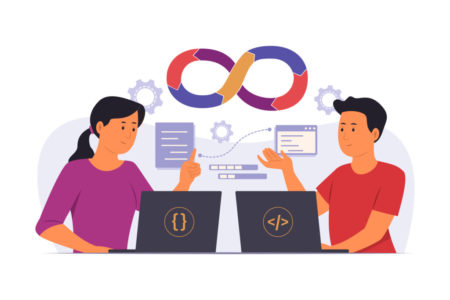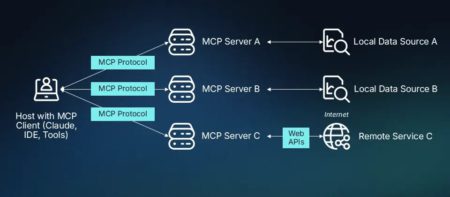Cloud migration lives or dies by test data. AI-generated and masked datasets speed setup, expand coverage, and cut errors, keeping projects on time and compliant. This blog explains common migration bottlenecks, how AI overcomes them, how to build a scalable test data strategy across microservices and CI/CD, and the metrics that prove value.
The post The High Stakes of Cloud Migration: How AI Test Data Can Make or Break Your Strategy first appeared on TestingXperts.
Software Engineering
Staying one step ahead of cyber-criminals has never felt more urgent. According to CERT-IN, India recorded over 3 million cybersecurity incidents in 2024 alone, a figure that continues to climb as organisations accelerate their cloud, mobile, and IoT roll-outs. Meanwhile, compliance demands from the Personal Data Protection Act (PDPA) to PCI DSS are tightening every
The post VAPT in 2025: A Step‑by‑Step Guide appeared first on Codoid.
HTML Injection might not grab headlines like SQL Injection or Cross-Site Scripting (XSS), but don’t let its lower profile fool you. This vulnerability can quietly erode user trust, spoof content, and open the door to phishing attacks that exploit your application’s credibility. For QA engineers, incorporating security testing, integrating strong content quality validation (CQV) practices
The post HTML Injection Explained: Types, Risks, and Prevention appeared first on Codoid.
In Agile software development, the demand for high-quality test data is crucial, but traditional production data often leads to bottlenecks due to privacy and compliance concerns. Synthetic test data, generated by AI, offers a secure, flexible alternative by mimicking real data without exposing sensitive information. It speeds up testing, improves coverage, and uncovers edge cases missed by traditional data. With synthetic data, teams can quickly generate tailored datasets for each test scenario, reducing waiting times and improving efficiency. Embracing synthetic test data helps businesses accelerate delivery, enhance product quality, and innovate faster.
The post Break Free from Legacy Bottlenecks – How Synthetic Test Data Fuels Agile Innovation first appeared on TestingXperts.
Imagine this familiar scene: it’s Friday evening, and your team is prepping a hot-fix release. The code passes unit tests, the sprint board is almost empty, and you’re already tasting weekend freedom. Suddenly, a support ticket pings:“Screen-reader users can’t reach the checkout button. The focus keeps looping back to the promo banner.”The clock is ticking,
The post AI in Accessibility Testing: The Future Awaits appeared first on Codoid.
The Shift-Right approach is rapidly becoming a cornerstone of modern quality engineering, offering enterprises a smarter way to ensure software excellence post-deployment. Unlike the traditional Shift-Left model, which focuses on early testing in the development lifecycle, Shift-Right emphasizes continuous validation in production using real-user data and behavior insights. This strategy helps organizations improve customer experience, resolve issues faster, and make data-informed decisions with greater precision. Read the blog now
The post Shift-Right Testing Isn’t Optional Here’s How AI and Real Users Are Making It Work first appeared on TestingXperts.
Please keep in mind, I’m just trying to get points so I can join a particular group. I need 20. But if you feel like you could give a decent answer, I’m all ears.
The code architecture thing being bugless is more of me perusing through stack exchange and seeing so many “How come when I do this this happens” or “when I place this and I’ve been doing it for years. This happens but I can’t do it now with this new thing?”
It seems like a lot of of stuff not working cuz they’re no longer compatible or something’s “flipped” incorrectly or needs to be “connected” to the correct calibrator (I’m sure I’m saying gibberish), but the idea is essentially the same. Why are there so many tiny technical incompatibilities? Isn’t there some form of architecture that just limits this or makes it impossible to happen?
Someone should get on that (I ask ignorantly)
Just curious: I’ve always written tests in a declarative style especially with page object model. But doesn’t this break the single responsibility principle? I used to write things with an imperative style but maintenance was a headache and it was harder to read.
So my question is: Is there a general consensus of which we should be using in our tests? And if it IS declarative, doesn’t that break SOLID (specifically the S) principles?
In today’s rapidly evolving software testing and development landscape, ensuring quality at scale can feel like an uphill battle without the right tools. One critical element that facilitates scalable and maintainable test automation is effective configuration management. YAML, short for “YAML Ain’t Markup Language,” stands out as a powerful, easy-to-use tool for managing configurations in
The post YAML for Scalable and Simple Test Automation appeared first on Codoid.
Post Content Source: Read More
Have you ever wondered why some software teams are consistently great at handling unexpected issues, while others scramble whenever a bug pops up? It comes down to preparation and more specifically, software testing technique known as bebugging. You’re probably already familiar with traditional debugging, where developers identify and fix bugs that naturally occur during software
The post Master Bebugging: Fix Bugs Quickly and Confidently appeared first on Codoid.
I am new to “Test Plan Writing” and I want to learn how to write test plan.
As a beginner, what do I need to understand and learn first to write quality/effective test plan?
What would you suggest?
Let’s be honest: building great software is hard, especially when everyone’s juggling shifting priorities, fast-moving roadmaps, and the demands of software testing. If you’ve ever been part of a team where developers, testers, designers, and business folks all speak different languages, you know how quickly things can go off the rails. This is where user
The post User Stories: Techniques for Better Analysis appeared first on Codoid.
AI is transforming accessibility testing by automating audits and reducing effort, but it can’t replace human judgment. This blog explores why a hybrid approach—AI-powered tools plus human-in-the-loop validation—is essential for reliable, inclusive digital experiences. Learn how Tx leverages this synergy to deliver accurate, scalable, and regulation-compliant accessibility testing solutions.
The post Win the Accessibility Game: Combining AI with Human Judgment first appeared on TestingXperts.
Artificial Intelligence is no longer a distant dream; it’s rapidly reshaping how we build, test, and release software. And just when we thought GPT-4o was groundbreaking, OpenAI is gearing up to launch its next leap: GPT-5. For software testers, QA engineers, and automation experts, this isn’t merely another version upgrade; it’s a complete transformation. GPT-5
The post GPT-5 is Coming: Revolutionizing Software Testing appeared first on Codoid.
The blog discusses how AI is leveling up the QA outsourcing industry by enhancing efficiency, improving code quality, and reducing costs. You will learn how to choose the right AI-driven QA partner and see how intelligent testing strategies can help you stay competitive in the digital age.
The post Lead with Intelligence: Rethink QA Outsourcing for the AI Age first appeared on TestingXperts.
Artificial Intelligence (AI) continues to revolutionize industries, driving unprecedented productivity and efficiency. One of its most transformative effects is on the field of automation testing, where AI tools are helping QA teams write test scripts, identify bugs, and optimize test coverage faster than ever. Among today’s standout AI tools are GitHub Copilot vs Microsoft Copilot.
The post GitHub Copilot vs Microsoft Copilot: What’s the Real Difference? appeared first on Codoid.
DevOps tooling has become mission-critical. What used to be a niche engineering function is now a core business driver. And…
In today’s high-velocity software development world, test automation has become the lifeblood of continuous integration and delivery. However, as testing needs grow more complex, automation tools must evolve to keep pace. One of the most promising innovations in this space is the Model Context Protocol (MCP), a powerful concept that decouples test logic from browser
The post Open Source MCP: Powering Scalable Test Automation appeared first on Codoid.
The blog discusses how scriptless automation streamlines test creation using visual, no-code tools ideal for fast, UI-focused testing. While accessible and quick to implement, it struggles with complex logic, backend testing, and large-scale maintainability. Careful evaluation is essential before adoption.
The post The Hidden Trade-Offs of Scriptless Automation Are You Sacrificing Strategy for Speed? first appeared on TestingXperts.


